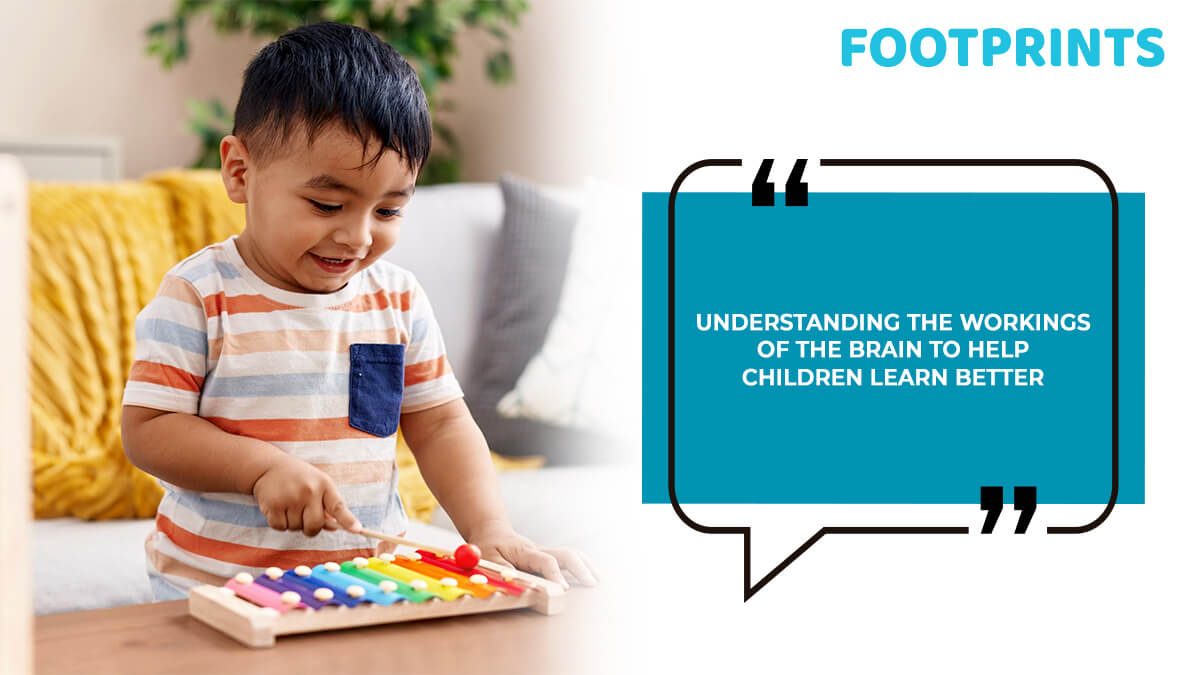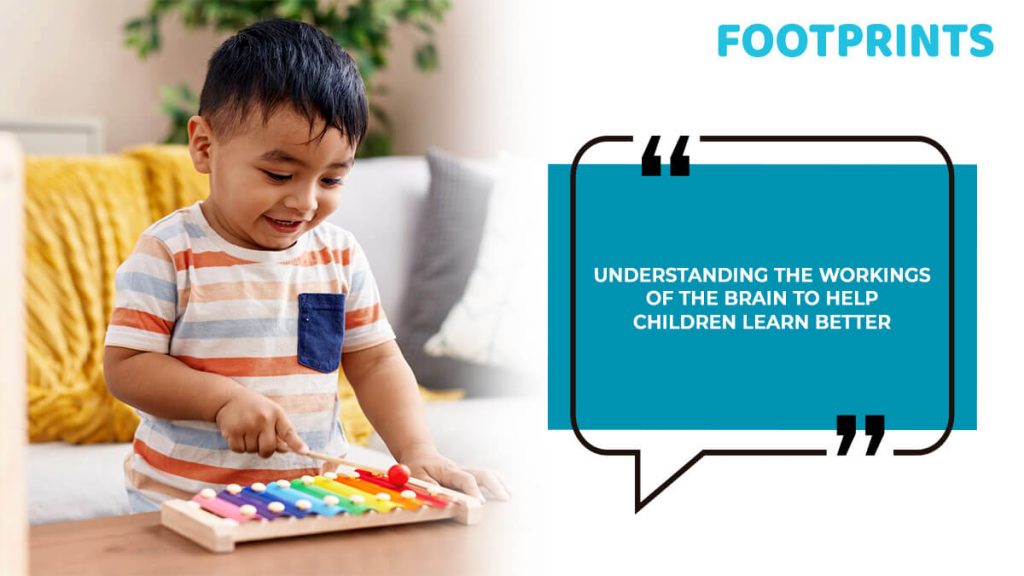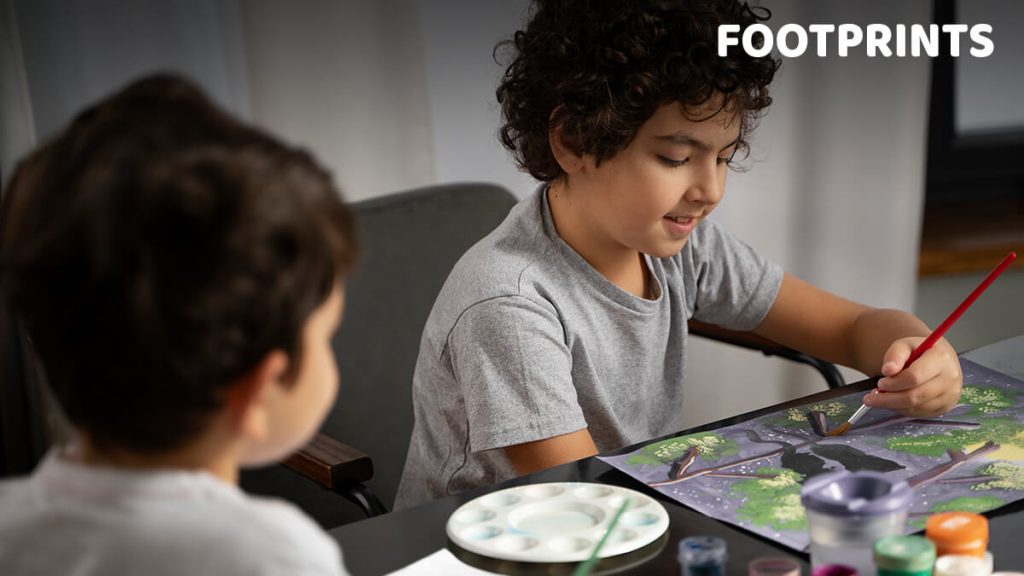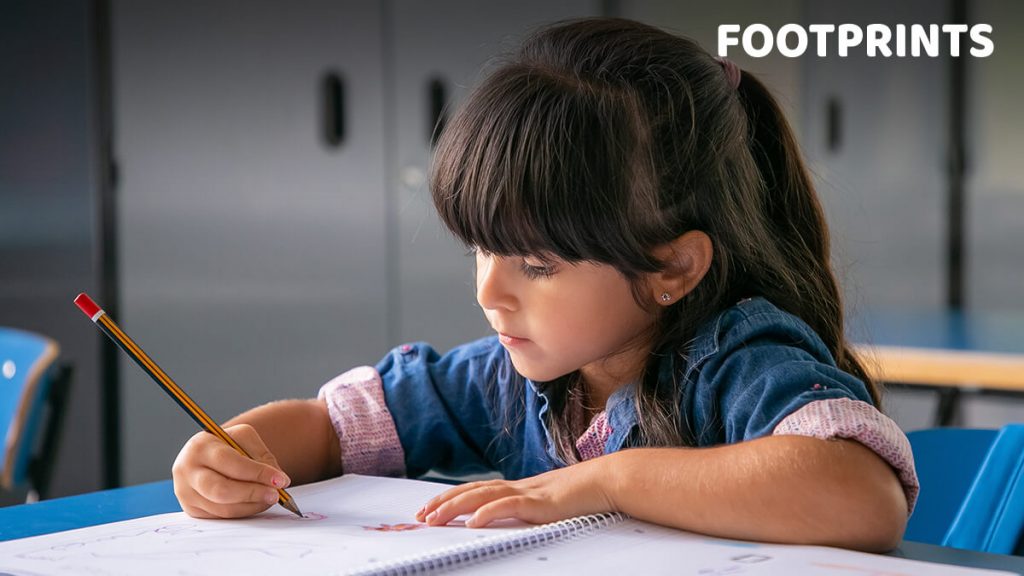

Most of us have probably come across the idea that 90% of a child’s brain development happens before they turn 5. What does this mean? And, even more crucially, how does the brain learn new skills? These are inquiries that will captivate any parent of a preschooler.
Here at Footprints, a renowned preschool and daycare chain celebrated for its scientifically designed curriculum to foster children’s comprehensive growth, we highly prioritize the science of learning. Below, you’ll discover some fascinating insights about the brain that can significantly benefit you as a parent.
Brain Development
Indeed, it’s well-established that a child’s brain experiences its most rapid development from birth to age 5. However, does this imply that new brain cells continue to be generated until age 5? Not at all. A newborn baby possesses all the brain cells they will ever have in their lifetime. The connections between these cells, scientifically referred to as synapses, undergo remarkable development during the first five years. Within this timeframe, an astonishing rate of up to one million new neural connections form every second, surpassing any other stage in life. These connections are instrumental in shaping essential higher-level abilities, including critical thinking, self-regulation, problem-solving, and more. Notably, the absence of these vital connections during these early years can lead to significant functional challenges later in life.
So, as a parent or caregiver, what can you do to facilitate the formation of these connections and promote optimal brain development in children? Here is a practical guide to assist you:
1. Caring Relationships
Everyday interactions and experiences significantly influence the development of brain connections. A child receiving high-quality care, stimulation, and interaction during their early years fosters the development of these brain connections. Each time a caregiver is responsive to the child’s needs, they contribute to the positive wiring of the brain. In other words, when a baby’s expectations for protection and nurturance are met, it stimulates their brain development.
Conversely, adverse childhood experiences such as neglect, exposure to family violence, and more can harm a child’s early brain development. Their social, emotional, intellectual, and language development may suffer in such circumstances. This hinders their long-term chances of success.
2. Practice
If you’re eager for your preschooler to learn any skill, whether it is writing, thinking, or jumping, practice is of utmost benefit is practice. To understand the significance of practice, it’s helpful once again to delve into how the brain functions. The brain comprises billions of neurons, which are essentially brain cells acting as messengers, transmitting information to other neurons. For instance, when a child needs to write, a neuron in the brain sends a message to move the finger. Similarly, signals must pass from one neuron to another for any other activity, such as jumping or talking.
When a child learns something new, it also involves the creation of new connections between neurons, a process referred to as neuroplasticity. The practice serves to strengthen these connections. As the connections become stronger, messages between neurons transmit more rapidly. This means that the child gradually improves their proficiency in that activity. Conversely, when a child stops practicing a specific activity, the connections between neurons weaken. Consequently, if, for example, a child stops reading, they may find it more challenging when they eventually resume.
In essence, the brain’s ability to change and adapt, rather than remaining fixed, underscores the importance of repeated practice in helping children learn new skills and improve.

3. Short Periods of practice followed by breaks
What has also been observed to enhance learning is practicing in short, focused sessions. Scientists have found that extended, uninterrupted study sessions may not be as effective for the brain as taking breaks in between. During these breaks, the brain optimizes the connections that are strengthened through practice.
This brings us to the significance of a good night’s sleep and even daytime naps. A proper night’s sleep between practice sessions helps the child reactivate the connections between their neurons. You may have noticed this yourself: if you teach a child a particular rhyme in the evening, and they get a good night’s sleep, the chances of them reciting the rhyme to you the following day are much higher. These everyday experiences align with the theory of connections becoming more efficient.

To Sum Up
A comprehensive understanding of how neurons function can significantly assist in helping a child acquire various skills. By creating optimal conditions, including providing the child with supportive and nurturing relationships and offering them ample practice in small, manageable portions, you can ensure that you are establishing a solid foundation for their learning.
Here’s to positive parenting and children developing a wide range of skills!
Aditya brings over ten years of expertise as a Senior Marketing Strategist. He’s an expert at developing captivating marketing tactics that regularly provide excellent outcomes. His innovative strategies have demonstrated a track record of increasing organizational reach and engagement, showcasing his extensive knowledge of the contemporary marketing landscape.

